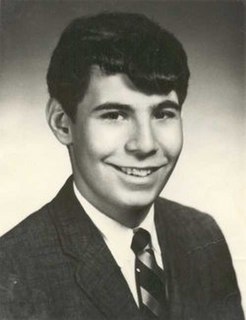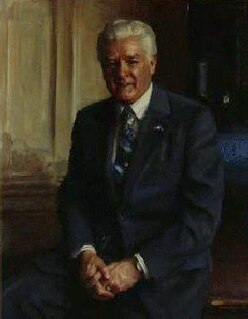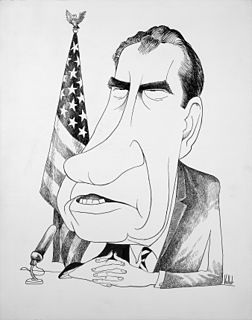
Woodstock West is the name University of Denver students gave to the shanty village that they built while protesting the school's decision to stay open after the Kent State shootings.

Woodstock West is the name University of Denver students gave to the shanty village that they built while protesting the school's decision to stay open after the Kent State shootings.
On May 4, 1970, 1,500 students gathered on the University of Denver campus to publicly mourn their fallen comrades at Kent State [1] and attempted to make sense of President Nixon’s invasion of Cambodia, a clear sign of extending rather than ending the contentious Vietnam War. [2] Shouts of “Burn! Burn! Burn!” tumbled through the student body like a Rocky Mountain spring avalanche. [3] Somehow, a lone voice broke through, “Let’s build, not burn.” Thus was born the idea for Woodstock West, an intentionally peaceful response to the violence engulfing campuses from New York to Seattle. [4] [5]
Students pitched tents and built makeshift shelters on a grassy area known as the Carnegie Green. [6] There they debated, performed, sang, talked and tried to make sense of their sorrow and anger. The spirit of those first few days replicated the peace and freedom of its namesake, the 1969 music extravaganza Woodstock. [7]
The encampment was eventually razed on May 13, after the university called in the Colorado National Guard. [8] [9] [10]
Two critical events that helped to set the stage for Woodstock West were President Nixon's position on the Vietnam War, and the shooting of student protesters at Kent State.
Nixon had campaigned in 1968 that he would end U.S. involvement in the Vietnam War. Among other platform statements that detailed an end to the war, the Republicans wrote in 1968, “We must urgently dedicate our efforts toward restoration of peace both at home and abroad.” [11] His narrow victory over Democrat Hubert Humphrey and Independent George Wallace [12] illustrated, in part, the voters’ support of this platform imperative. On April 30, 1970, however, the president came clean about a 14-month bombing campaign in Cambodia. This signaled to many he had broken his campaign promise and had, instead, escalated the war he promised to end. [2]
This set off the second critical event that provided impetus for Woodstock West. In response to Nixon's announcement, campuses erupted into protests, strikes, and violence. Perhaps the most well-known incident of this time happened at Kent State University in Kent, Ohio. The governor called the National Guard into Kent after various violent incidents occurred in town and on campus. [1] A Monday morning anti-war rally ended with Guardsmen killing four students, wounding nine others and leaving a nation in shock.

The 1968 United States presidential election was the 46th quadrennial presidential election, held on Tuesday, November 5, 1968. The Republican nominee, former vice president Richard Nixon, defeated the Democratic nominee, incumbent vice president Hubert Humphrey, and the American Independent Party nominee, former Alabama governor George Wallace.

Hubert Horatio Humphrey Jr. was an American pharmacist and politician who served as the 38th vice president of the United States from 1965 to 1969. He twice served in the United States Senate, representing Minnesota from 1949 to 1964 and 1971 to 1978. As a senator he was a major leader of modern liberalism in the United States. As President Lyndon Johnson's vice president, he supported the controversial Vietnam War. An intensely divided Democratic Party nominated him in the 1968 presidential election, which he lost to Republican nominee Richard Nixon.

Melvin Robert Laird Jr. was an American politician, writer and statesman. He was a U.S. congressman from Wisconsin from 1953 to 1969 before serving as Secretary of Defense from 1969 to 1973 under President Richard Nixon. Laird was instrumental in forming the administration's policy of withdrawing U.S. soldiers from the Vietnam War; he coined the expression "Vietnamization," referring to the process of transferring more responsibility for combat to the South Vietnamese forces. First elected in 1952, Laird was the last surviving Representative elected to the 83rd Congress at the time of his death.

Jeffrey Glenn Miller was an American student at Kent State University in Kent, Ohio, who was killed by the Ohio Army National Guard in the Kent State shootings. He had been protesting against the invasion of Cambodia and the presence of the National Guard on the Kent State campus. National Guardsmen opened fire on a group of unarmed students, killing Miller and three others.

Peter Joseph Brennan was an American labor activist and politician who served as United States Secretary of Labor from February 2, 1973 until March 15, 1975 in the administrations of Presidents Nixon and Ford. Brennan had previously been the president of both the Building and Construction Trades Council of Greater New York and the Building and Construction Trades Council of New York, and he returned to the former position after leaving the Ford administration. He was a strong opponent of affirmative action measures to increase the number of minority construction workers. After organizing a demonstration in support of the Nixon administration that turned into the Hard Hat Riot of May 8, 1970, where construction workers violently attacked student anti-war protesters, Brennan was wooed by the Nixon administration as a potential supporter in the 1972 presidential election. His work for Nixon in that election was crucial in increasing the vote for Nixon in New York and in the union movement.

Allison Beth Krause was an American honor student at Kent State University in Kent, Ohio, when she was killed by soldiers of the Ohio Army National Guard in the Kent State shootings, while protesting against the invasion of Cambodia and the presence of the National Guard on the Kent State campus. National Guardsmen opened fire on a group of unarmed students, killing four of them, at an average distance of about 345 ft (106 m). Krause was shot in the left side of her chest at about 330 feet (101 m), from which she received a fatal wound. A subsequent autopsy found that a single rifle bullet entered and exited her upper left arm, and then entered the left side of her chest, fragmenting on impact and causing massive internal trauma. She died from her wounds later the same day.

Opposition to United States involvement in the Vietnam War (before) or anti-Vietnam War movement (present) began with demonstrations in 1965 against the escalating role of the United States in the Vietnam War and grew into a broad social movement over the ensuing several years. This movement informed and helped shape the vigorous and polarizing debate, primarily in the United States, during the second half of the 1960s and early 1970s on how to end the war.

The Moratorium to End the War in Vietnam was a massive demonstration and teach-in across the United States against the United States involvement in the Vietnam War. It took place on October 15, 1969, followed a month later, on November 15, 1969, by a large Moratorium March in Washington, D.C.

The Hard Hat Riot occurred on May 8, 1970, in New York City. It started around noon when around 400 construction workers and around 800 office workers attacked around 1,000 demonstrators affiliated with the student strike of 1970. The students were protesting the May 4 Kent State shootings and the Vietnam War, following the April 30 announcement by President Richard Nixon of the U.S. invasion of neutral Cambodia. Some construction workers carried U.S. flags and chanted "USA, All the way", and "America, love it or leave it". Anti-war protesters shouted, “Peace now”.

Operation Menu was a covert United States Strategic Air Command (SAC) tactical bombing campaign conducted in eastern Cambodia from 18 March 1969 to 26 May 1970 as part of both the Vietnam War and the Cambodian Civil War. The targets of these attacks were sanctuaries and base areas of the People's Army of Vietnam and forces of the Viet Cong (VC), which used them for resupply, training, and resting between campaigns across the border in the Republic of Vietnam. The impact of the bombing campaign on the Khmer Rouge guerrillas, the PAVN, and Cambodian civilians in the bombed areas is disputed by historians.

The Cambodian campaign was a brief series of military operations conducted in eastern Cambodia in 1970 by South Vietnam and the United States as an extension of the Vietnam War and the Cambodian Civil War. Thirteen major operations were conducted by the Army of the Republic of Vietnam (ARVN) between 29 April and 22 July and by U.S. forces between 1 May and 30 June 1970.

The Kent State shootings, also known as the May 4 massacre and the Kent State massacre, were the killings of four and wounding of nine other unarmed Kent State University students by the Ohio National Guard on May 4, 1970 in Kent, Ohio, 40 mi (64 km) south of Cleveland. The killings took place during a peace rally opposing the expanding involvement of the Vietnam War into Cambodia by United States military forces as well as protesting the National Guard presence on campus. The incident marked the first time that a student had been killed in an anti-war gathering in United States history.
Robert Donald Clark was an American university administrator.

The student strike of 1970 was a massive protest across the United States, that included walk-outs from college and high school classrooms initially in response to the United States expansion of the Vietnam War into Cambodia. Nearly 900 campuses nationwide participated. The strike began May 1, but increased significantly after the shooting of students at Kent State University by National Guardsmen on May 4. While many violent incidents occurred during the protests, they were, for the most part, peaceful.
On June 13, 1970, President Richard Nixon established the President's Commission on Campus unrest, which became known as the Scranton Commission after its chairman, former Pennsylvania governor William Scranton.
1968 in the United States was marked by several major historical events. It is often considered to be one of the most turbulent and traumatic years of the 20th century in the United States.

Events from the year 1970 in the United States.
Meyer “Mike” Alewitz is an educator, agitprop artist, mural painter, and political activist, working both in the United States and internationally. His use of art to lobby for workers’ rights has fostered numerous controversies. While his passionate and opinionated support for working people has led to the destruction and censoring of his works all over the globe, his approach has been described as “ideally suited to the postmodern and post-state socialist era, when everything rebellious must be created anew and when ‘culture' along with ‘labor’ are urgently needed to salvage a world from eco-disaster, perpetual war, and the plundering of human possibility.”

The following events occurred in May 1970:
Coordinates: 39°40′38″N104°57′43″W / 39.67721°N 104.96182°W